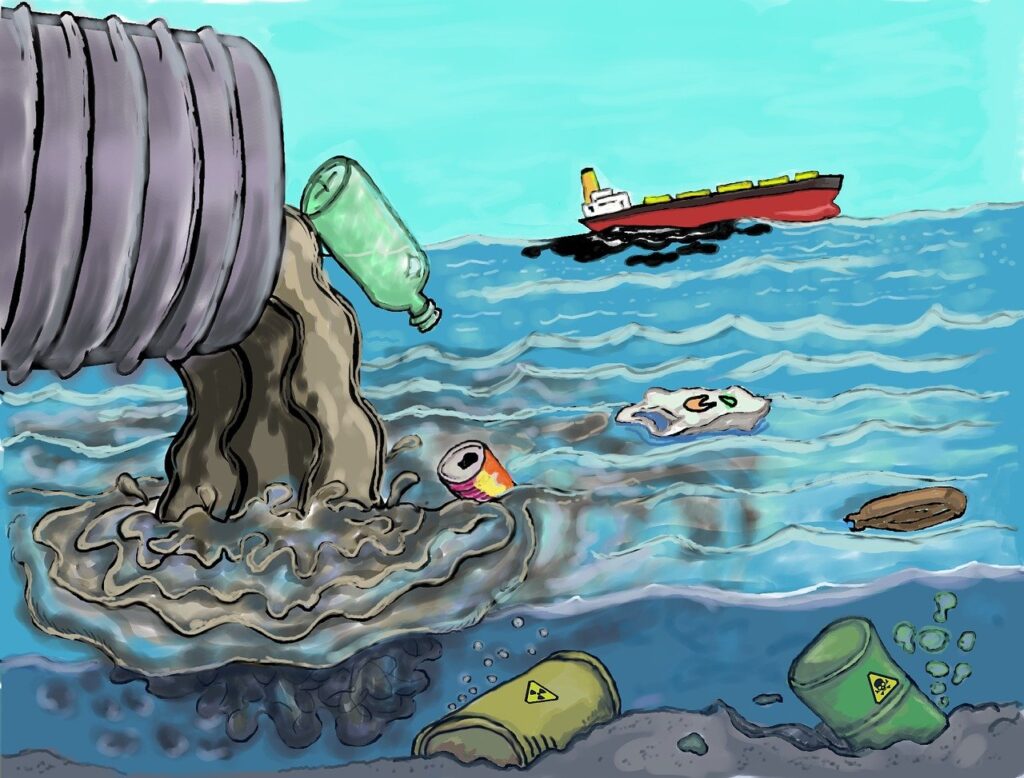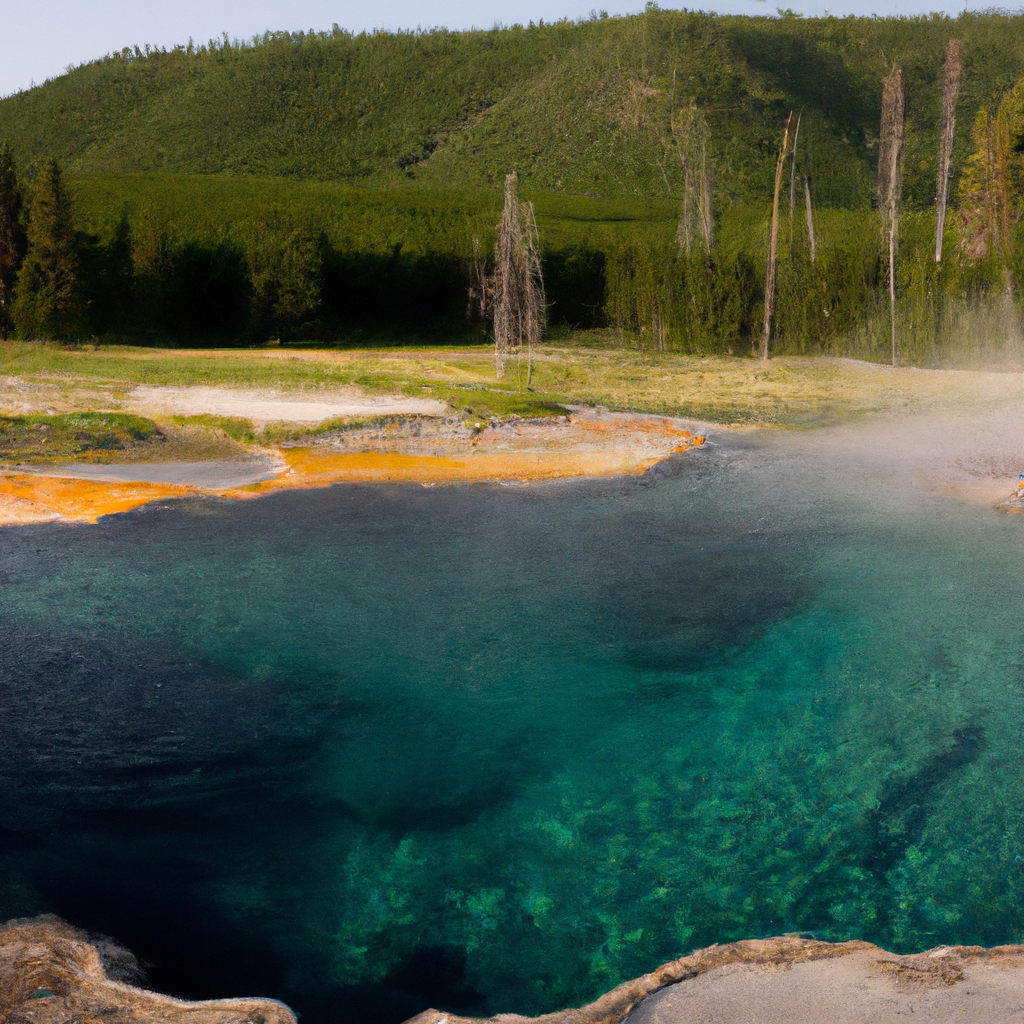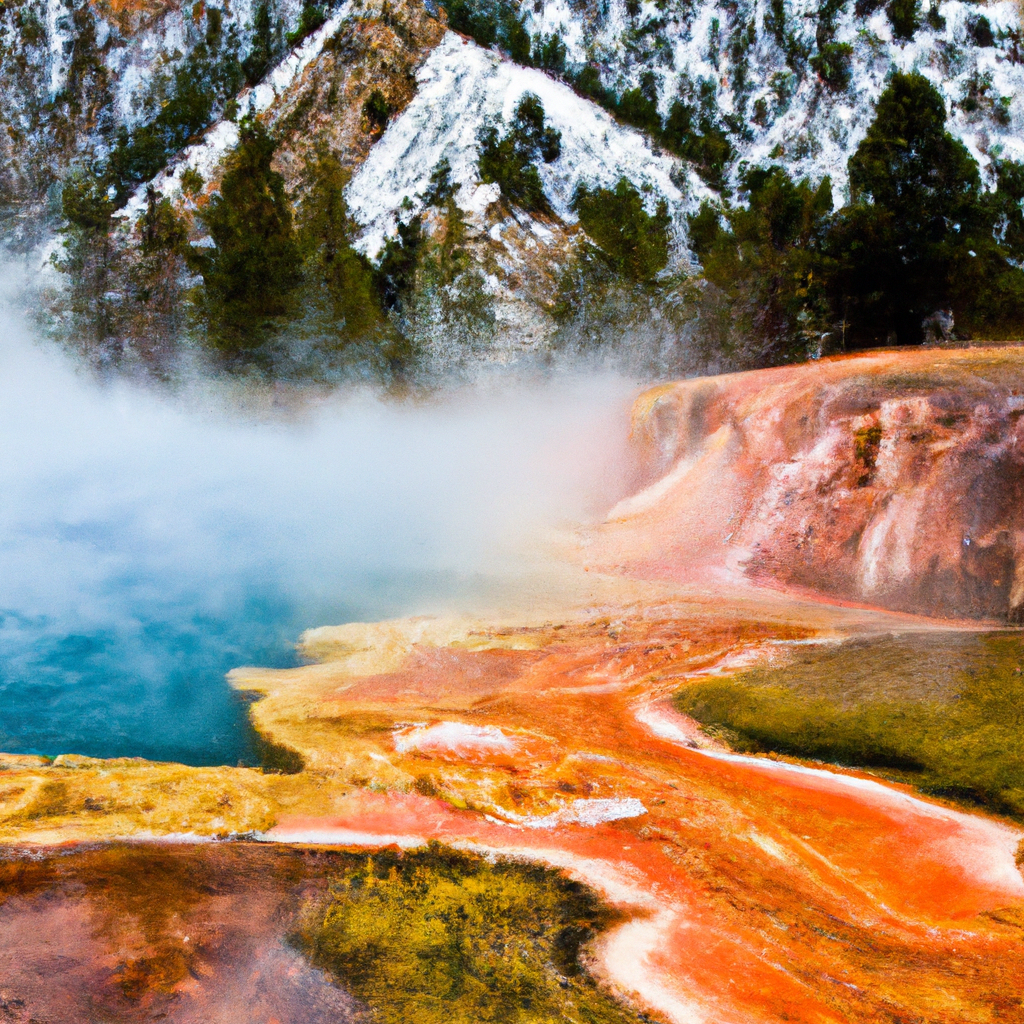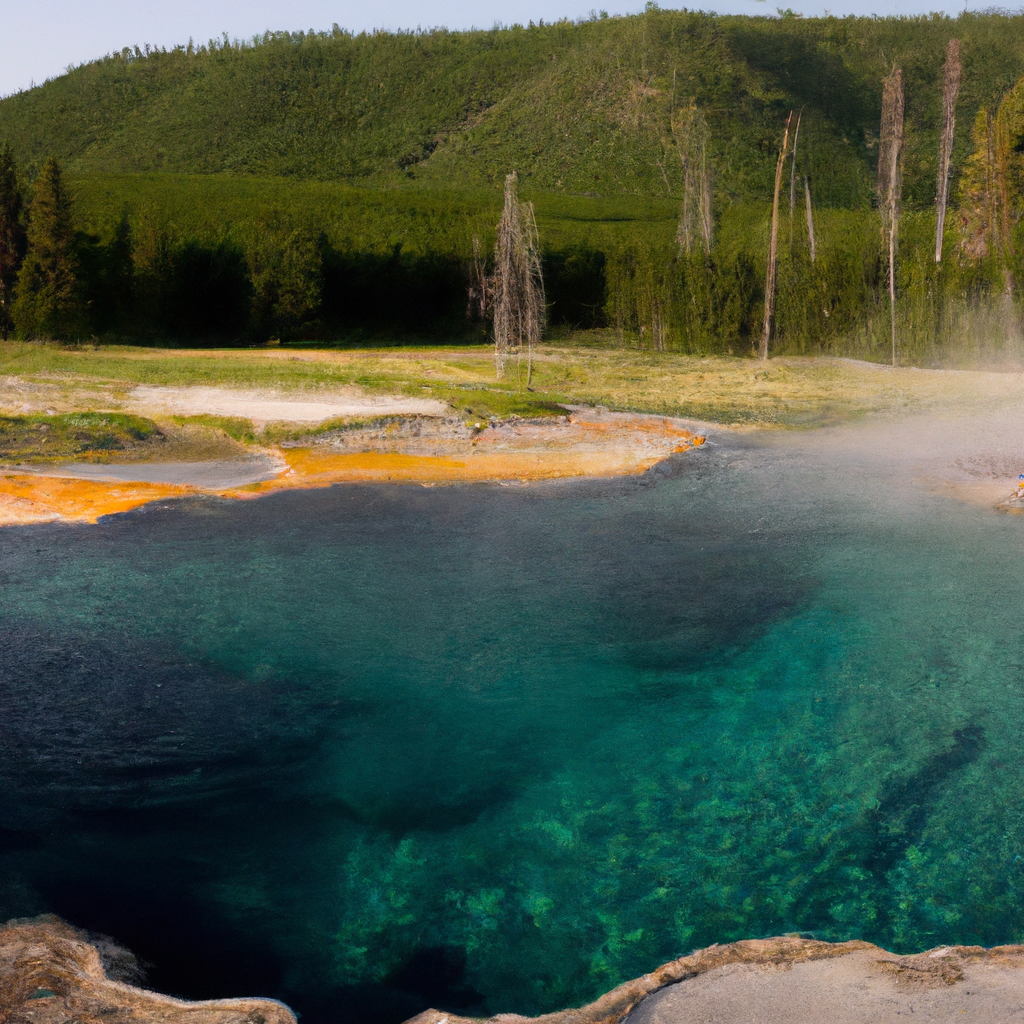Imagine a place where you can luxuriate in the soothing warmth of natural hot springs while knowing that every dip you take is contributing to the preservation of our beautiful planet. That̵7;s precisely what eco-friendly hot springs offer – a unique and sustainable way to indulge in relaxation while preserving the natural environment. By harnessing renewable energy sources and implementing eco-conscious practices, these enchanting hot springs not only provide a rejuvenating getaway but also empower us to be responsible stewards of the earth. Explore the wonders of eco-friendly hot springs and discover a whole new level of tranquility that goes hand in hand with environmental consciousness.
The Benefits of Eco-friendly Hot Springs
Hot springs have long been cherished for their therapeutic properties and the relaxation they offer. However, in recent years, there has been a growing awareness about the need to protect and preserve the environment while enjoying these natural wonders. Eco-friendly hot springs have emerged as a solution that not only allows people to unwind and rejuvenate but also ensures the conservation of natural resources, protects wildlife and ecosystems, collaborates with local communities, promotes environmental awareness, and maintains water and air quality. Let’s take a closer look at the various benefits of eco-friendly hot springs.
1. Conservation of Natural Resources
1.1 Water Conservation
One of the key advantages of eco-friendly hot springs is the conservation of water resources. Traditional hot springs often require large amounts of water to maintain their operations. In contrast, eco-friendly hot springs employ various strategies to minimize water usage. Water-efficient fixtures, such as low-flow showers and toilets, are installed to reduce water wastage. Additionally, hot springs with water recycling systems ensure that the water used is treated and reused, thus minimizing the need for fresh water.
1.2 Energy Conservation
Eco-friendly hot springs also prioritize energy conservation. These establishments make use of energy-efficient technologies and practices to minimize their carbon footprint. For instance, solar panels are installed to harness renewable energy and provide heating for the hot springs. LED lighting systems are used throughout the facility to reduce energy consumption. By implementing these energy-saving measures, eco-friendly hot springs not only contribute to a greener environment but also lower operational costs.
1.3 Land Preservation
Preserving natural land is a significant aspect of eco-friendly hot springs. These establishments take great care to ensure that the surrounding environment remains undisturbed and unharmed. By minimizing construction and development on untouched land, eco-friendly hot springs help protect ecosystems, wildlife habitats, and preserve the natural beauty of the area. This commitment to land preservation creates a harmonious balance between human relaxation and nature conservation.

2. Sustainable Bathing Practices
2.1 Organic and Biodegradable Products
Eco-friendly hot springs prioritize the use of organic and biodegradable bathing products. Traditional bathing products often contain harmful chemicals that can contribute to water pollution and damage aquatic life. In contrast, eco-friendly hot springs partner with environmentally conscious suppliers to offer organic soaps, shampoos, and conditioners. These products are gentle on the skin, free from harmful chemicals, and break down naturally without harming the surrounding environment.
2.2 Water Recycling Systems
To further enhance their commitment to sustainability, eco-friendly hot springs utilize advanced water recycling systems. After each use, the water is carefully treated and filtered to ensure its cleanliness. This recycled water is then reused in various non-potable applications, such as irrigation or cleaning, reducing the need for fresh water. Implementing water recycling systems not only conserves water but also reduces the strain on local water sources.
2.3 Efficient Heating Methods
Another key aspect of sustainable bathing practices in eco-friendly hot springs is the use of efficient heating methods. Traditional hot springs often rely on fossil fuels to heat the water, contributing to greenhouse gas emissions and climate change. In contrast, eco-friendly hot springs employ renewable energy sources, such as geothermal energy or solar power, to heat the water. These methods not only reduce carbon emissions but also make use of naturally occurring energy, minimizing the overall environmental impact.
3. Protecting Wildlife and Ecosystems
3.1 Preservation of Local Flora and Fauna
Eco-friendly hot springs recognize the importance of preserving local flora and fauna. These establishments are often located in areas rich in biodiversity and natural beauty. By implementing strict conservation measures, such as designated wildlife protection zones and reforestation efforts, eco-friendly hot springs ensure that the surrounding ecosystems are safeguarded. This conservation focus helps maintain the natural balance of the environment and encourages the coexistence of human and wildlife habitats.
3.2 Mitigating Harmful Effects on Aquatic Life
Hot springs are closely connected to water sources, making them particularly susceptible to harmful effects on aquatic life. Eco-friendly hot springs take measures to mitigate these impacts. By carefully monitoring water quality and employing eco-friendly filtration systems, hot springs minimize the release of pollutants and contaminants that can harm aquatic ecosystems. The protection of aquatic life is crucial in maintaining the ecological health and sustainability of hot springs.
3.3 Managing Human Impact and Footprint
Eco-friendly hot springs also actively manage human impact and minimize their ecological footprint. Through the implementation of sustainable practices, such as designated paths to minimize soil erosion and waste management systems to ensure proper disposal of waste, these hot springs mitigate the negative effects that increased human presence can have on fragile ecosystems. By encouraging responsible behavior and raising awareness among visitors, eco-friendly hot springs promote a greater sense of environmental responsibility and stewardship.

4. Collaborating with Local Communities
4.1 Supporting Sustainable Tourism
Eco-friendly hot springs play a vital role in supporting sustainable tourism practices. These establishments collaborate with local communities, tourism organizations, and environmental agencies to develop responsible tourism initiatives. By promoting eco-tourism activities and supporting local businesses, eco-friendly hot springs contribute to the social and economic well-being of the surrounding communities while minimizing negative environmental impacts.
4.2 Engaging Local Businesses and Farmers
In addition to supporting sustainable tourism, eco-friendly hot springs actively engage with local businesses and farmers. They prioritize the use of locally sourced products, such as organic food and beverages, to reduce the carbon footprint associated with transportation. By partnering with local farmers, eco-friendly hot springs not only ensure the freshness and quality of their offerings but also support local livelihoods and encourage sustainable agricultural practices.
4.3 Educating Visitors and Residents
Education plays a crucial role in promoting environmental awareness and responsibility. Eco-friendly hot springs take the initiative to educate both visitors and residents about the importance of environmental conservation. Through guided tours, workshops, and interpretive signage, they raise awareness about the local ecology, wildlife preservation, and sustainable practices. By fostering a sense of stewardship, eco-friendly hot springs empower individuals to make environmentally conscious choices both inside and outside the hot spring facility.
5. Eco-friendly Infrastructure and Design
5.1 Green Building Materials
Eco-friendly hot springs prioritize the use of sustainable building materials in their infrastructure and design. From the construction phase to ongoing renovations, these establishments choose materials that have a minimal impact on the environment. This includes using renewable or recycled materials, such as bamboo or reclaimed wood, for building structures. By adopting green building practices, eco-friendly hot springs reduce energy consumption, waste generation, and promote the conservation of natural resources.
5.2 Renewable Energy Sources
Renewable energy sources play a significant role in the sustainable operation of eco-friendly hot springs. These establishments harness the power of nature by utilizing solar panels, wind turbines, or geothermal energy systems to meet their energy needs. This reliance on renewable energy sources not only reduces greenhouse gas emissions but also provides a reliable and clean energy solution that aligns with the principles of environmental sustainability.
5.3 Natural Water Filtration Systems
Ensuring clean and safe water is a top priority for eco-friendly hot springs. These establishments employ natural water filtration systems to remove impurities and maintain water quality. Natural filtration methods, such as wetlands or sand filters, are utilized to mimic the natural purification processes occurring in ecosystems. This approach helps minimize the use of chemicals while promoting the preservation and restoration of water sources.

6. Promoting Environmental Awareness and Responsibility
6.1 Environmental Education Programs
Eco-friendly hot springs are committed to promoting environmental awareness through education programs. These programs aim to inform visitors about the importance of environmental conservation, the impact of their actions, and the steps they can take towards sustainability. Educational workshops, seminars, and guest speaker sessions are organized to provide valuable insights and practical tips for adopting eco-friendly habits in daily life. By fostering a sense of environmental responsibility, these programs empower individuals to become active participants in protecting the environment.
6.2 Conservation-focused Events and Activities
To further promote environmental awareness, eco-friendly hot springs organize conservation-focused events and activities. These events may include tree planting campaigns, coastal cleanups, or nature hikes aimed at connecting visitors with the natural surroundings. By actively engaging people in hands-on conservation efforts, eco-friendly hot springs nurture a sense of stewardship and inspire individuals to take positive action for the environment.
6.3 Partnerships with Environmental Organizations
Eco-friendly hot springs actively collaborate with environmental organizations to amplify their conservation efforts. By partnering with local or global environmental organizations, hot springs gain access to valuable expertise, resources, and networks. This partnership facilitates the implementation of conservation initiatives and supports ongoing research and monitoring of environmental impacts. Through such collaborations, eco-friendly hot springs contribute to the larger mission of environmental preservation and sustainability.
7. Ensuring Water and Air Quality
7.1 Monitoring and Treatment of Hot Springs Water
Water quality is of utmost importance in hot springs. Eco-friendly hot springs implement rigorous monitoring systems to ensure the cleanliness and safety of the hot springs water. Regular testing and treatment protocols are followed in accordance with local regulations and best practices. By maintaining high water quality standards, eco-friendly hot springs provide visitors with a safe and enjoyable bathing experience while protecting aquatic ecosystems.
7.2 Air Pollution Control Measures
Besides water quality, eco-friendly hot springs also take measures to minimize air pollution. Heating systems and facilities are equipped with advanced air filtration systems to reduce the release of pollutants into the atmosphere. By adopting such control measures, eco-friendly hot springs protect the air quality in and around their premises and mitigate potential health risks associated with pollutants.
7.3 Regular Testing and Evaluation
Eco-friendly hot springs prioritize regular testing and evaluation of water and air quality. This includes frequent water sampling and analysis to monitor any changes or contaminants. Additionally, periodic assessments of air quality are conducted to ensure compliance with established standards. By conducting these tests and evaluations, eco-friendly hot springs proactively address any potential issues and maintain the highest standards of water and air quality.

8. Balancing Tourism and Sustainability
8.1 Managing Visitor Capacity
Balancing tourism and sustainability is a crucial aspect of eco-friendly hot springs. To prevent overcrowding and undue strain on natural resources, these establishments implement visitor capacity management systems. By limiting the number of visitors allowed at any given time, eco-friendly hot springs ensure a peaceful and enjoyable experience while minimizing negative environmental impacts. This approach also promotes the conservation of sensitive areas and helps maintain the serenity of the hot springs.
8.2 Minimizing Ecological Footprint
Eco-friendly hot springs strive to minimize their ecological footprint in every aspect of their operation. From waste management practices to energy consumption and land use, these establishments continuously seek ways to reduce their impact on the environment. By implementing recycling programs, energy-saving initiatives, and sustainable purchasing practices, eco-friendly hot springs set an example for others in the hospitality industry and inspire guests to adopt similar practices in their own lives.
8.3 Sustainable Transportation Options
Eco-friendly hot springs encourage the use of sustainable transportation options for visitors. These establishments provide convenient access to public transportation, promote carpooling, and offer bicycle rentals to reduce reliance on private vehicles. By prioritizing sustainable transportation, eco-friendly hot springs minimize traffic congestion, lower carbon emissions, and contribute to the overall reduction of environmental impact.
Conclusion
Eco-friendly hot springs offer a holistic experience that goes beyond relaxation and rejuvenation. Through their commitment to conservation, sustainable practices, collaboration with local communities, infrastructure design, environmental education, and responsible management, these hot springs serve as beacons of environmental stewardship. By choosing to visit eco-friendly hot springs, you contribute to the preservation of our natural resources, protect wildlife and ecosystems, promote sustainable tourism, and become an active participant in a greener future. So next time you seek the soothing embrace of hot springs, why not choose an eco-friendly option? Embrace the goodness of nature while preserving it for generations to come.

